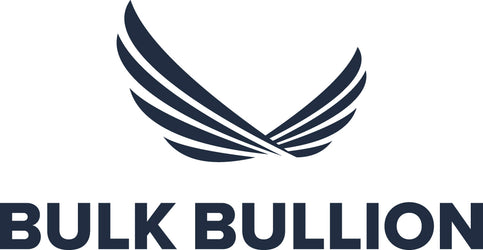
Unveiling the Mysteries of Inflation | Bulk Bullion
Money Supply Growth - "money printing"
Excessive money supply growth relative to economic output can lead to inflation, as more money chases the same amount of goods and services, decreasing the currency's purchasing power. The perfect example of this was the “money printing we say during 2020 displayed in the chart below.
Inflation Concerns
Rising inflationary pressures have been a significant driver of demand for gold and silver bullion in recent years. As central banks continue to inject liquidity into the financial system and governments implement fiscal stimulus packages, there are concerns about the potential for inflation to rise significantly. Precious metals like gold and silver are seen as traditional hedges against inflation, as they tend to retain their value over time.

Source: Federal Reserve Bank of St. Louis
The Velocity of Money
Although “money creation” is often the blame for inflation, it is in fact The Velocity of Money. This is the rate at which money circulates in an economy, indicating how quickly money changes hands for goods and services. It is typically measured as the number of times a unit of currency is spent within a given time period, usually a year.
A high velocity of money suggests that money is changing hands frequently, indicating a vibrant economy with robust spending and economic activity. Conversely, a low velocity of money implies that money is being hoarded or moving slowly through the economy, which can indicate economic stagnation or uncertainty.
The velocity of money is influenced by various factors, including:
- Consumer and Business Confidence: Confidence in the economy can influence spending behavior. High confidence levels may lead to increased spending, resulting in a higher velocity of money.
- Interest Rates: Interest rates affect borrowing costs and saving incentives. Lower interest rates can encourage borrowing and spending, potentially increasing the velocity of money.
- Economic Policies: Fiscal and monetary policies implemented by governments and central banks can impact the velocity of money. Expansionary policies, such as increased government spending or quantitative easing, may stimulate economic activity and raise the velocity of money.
- Technological Advances: Innovations in payment systems and financial technology (fintech) can affect the velocity of money by making transactions faster and more efficient, potentially increasing the speed at which money circulates.
- Inflation Expectations: Expectations about future inflation can influence spending behavior. If individuals expect prices to rise in the future, they may accelerate their spending, leading to a higher velocity of money.

Source: Federal Reserve Bank of St. Louis
Monitoring changes in the velocity of money can provide insights into the overall health and dynamics of an economy. Central banks and policymakers often consider the velocity of money alongside other economic indicators when formulating monetary policy and assessing the effectiveness of their interventions.

Leave a comment